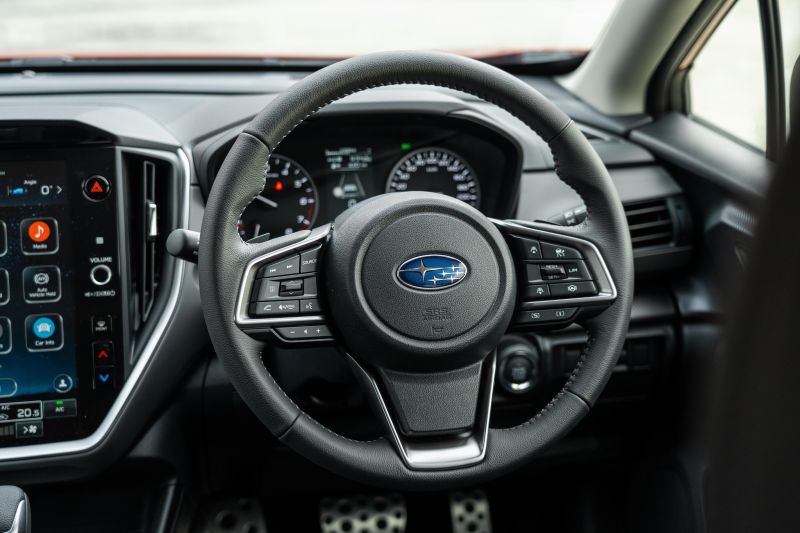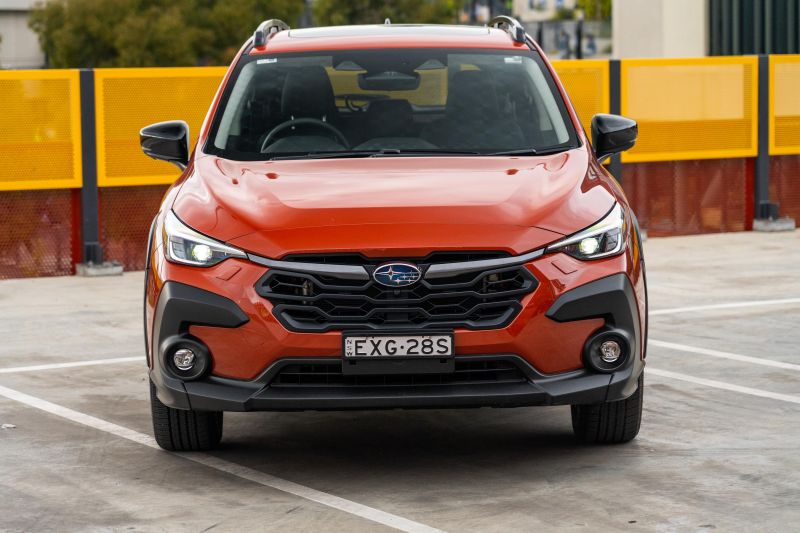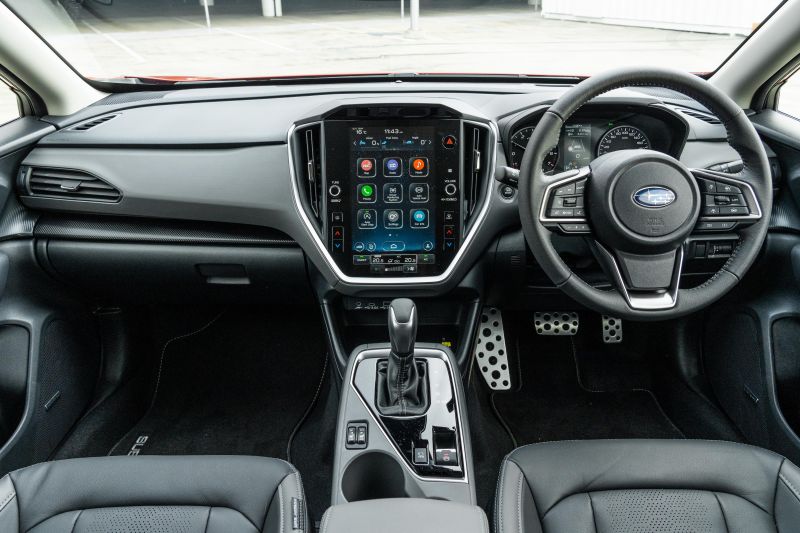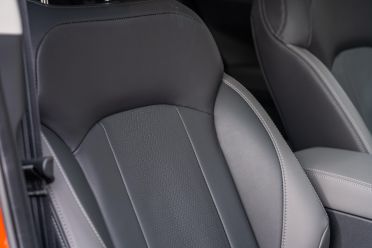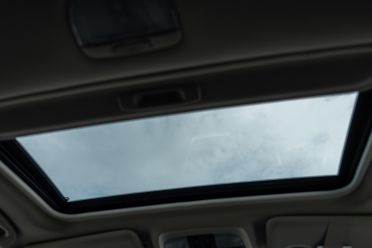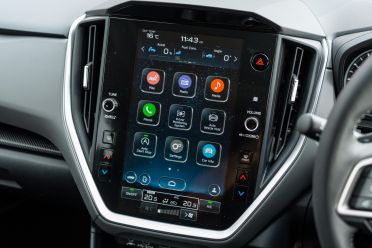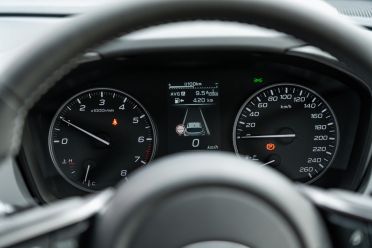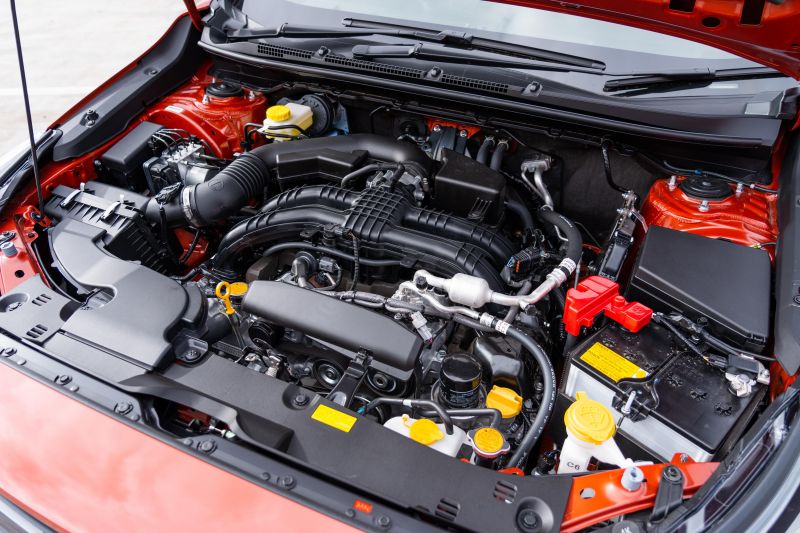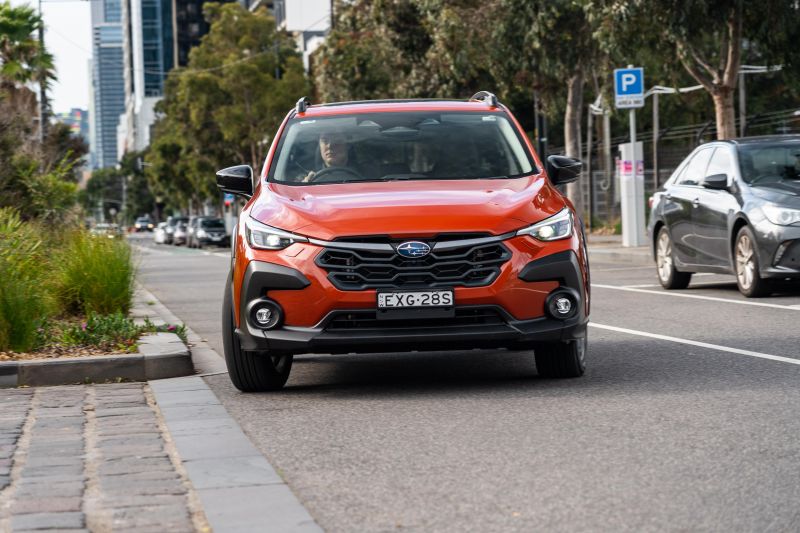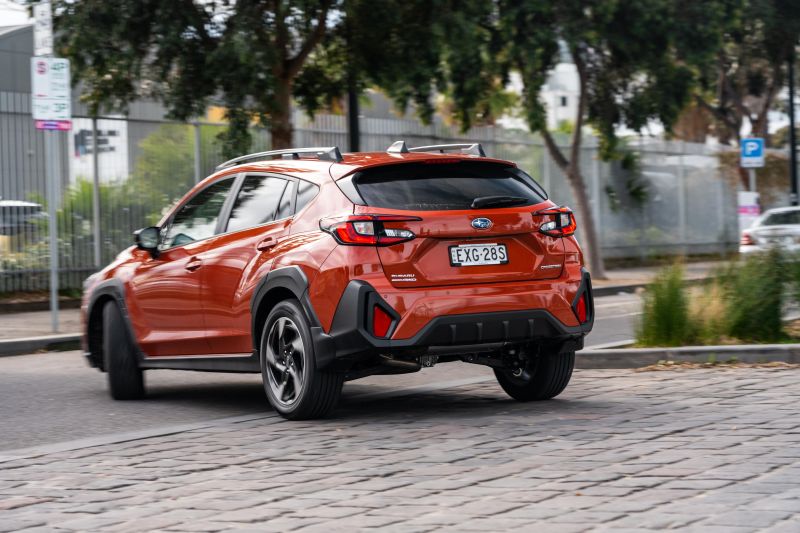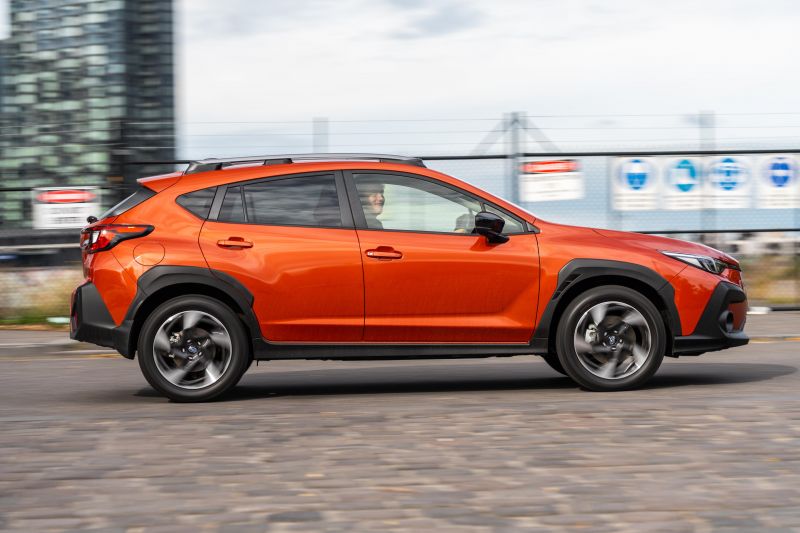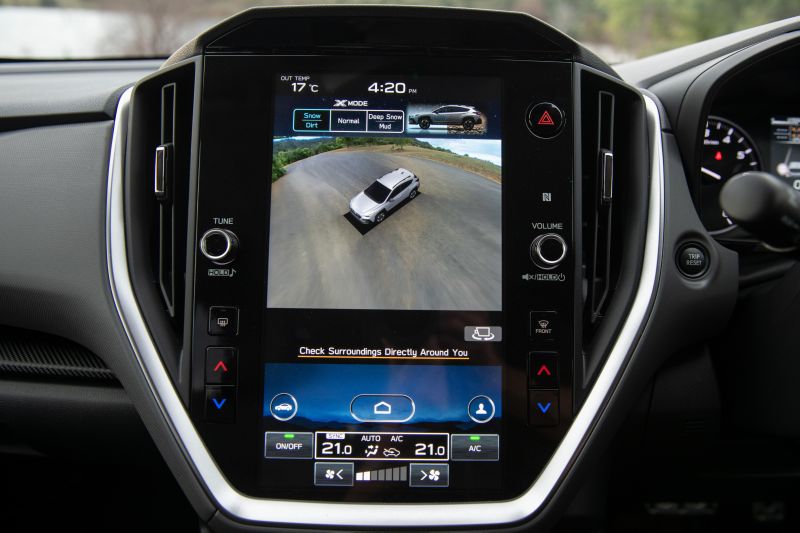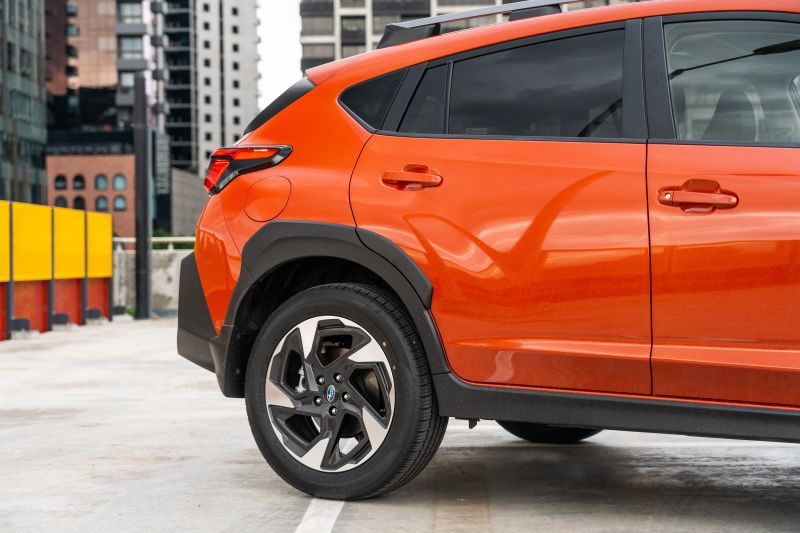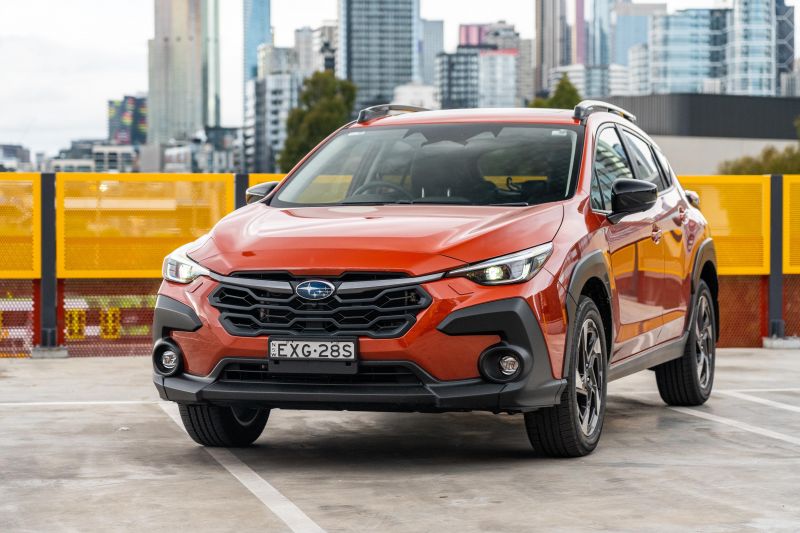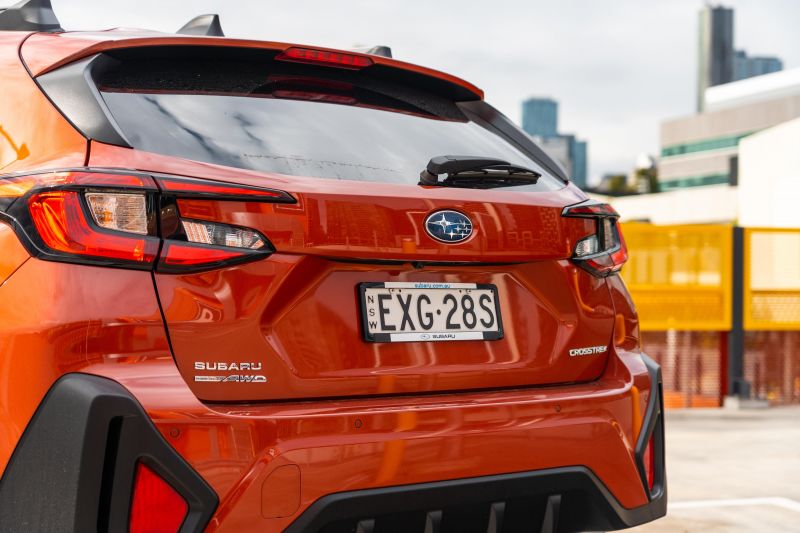Subaru’s smallest car has been given a big overhaul.
Along with a new look and a new interior, the Crosstrek name has replaced the long-running XV badge locally. Plenty has changed under the skin as well, thanks to a switch to Subaru’s latest global architecture.
It’s promising improved refinement, better comfort, and better handling than before – along with some choice upgrades to the powertrain. The more things change though, the more they stay the same at Subaru.
Despite the promise of wholesale change, the Crosstrek is still powered by a naturally-aspirated ‘Boxer’ engine, and still features full-time all-wheel drive across the range – and Subaru still says it’s a small SUV that’ll take you down the sort of mild off-road trails that would make its rivals very nervous.
How does it stack up in range-topping AWD 2.0S guise?
How much does the Subaru Crosstrek AWD 2.0S cost?
The 2.0S is the most expensive petrol model in the Crosstrek range, although its hybrid equivalent is the most expensive version outright.
At $41,490 before on-roads, it’s $3000 more expensive than the 2.0R sitting below it in the range and $5500 pricier than the entry-level model.
The 2.0S goes head-to-head with the Kia Seltos GT-Line FWD ($41,500), Hyundai Kona Premium ($42,500), the Nissan Qashqai ST-L ($42,190), and the Mazda CX-30 G20 Astina ($42,210).
2023 Subaru Crosstrek pricing:
- Subaru Crosstrek AWD 2.0L: $34,990
- Subaru Crosstrek AWD 2.0R: $38,490
- Subaru Crosstrek AWD 2.0S: $41,490
- Subaru Crosstrek AWD Hybrid L: $38,590
- Subaru Crosstrek AWD Hybrid S: $45,090
Prices exclude on-road costs
What is the Subaru Crosstrek AWD 2.0S like on the inside?
The Crosstrek has taken a huge step forward inside, in line with the broader Subaru range.
With a massive, portrait-oriented screen and modern dashboard design, it looks up to the task of justifying its $40,000 price tag – although it does look very conventional alongside the very modern, screen-heavy Koreans.
The driving position is excellent for tall drivers, offering a commanding view of the road ahead despite the compact exterior, and most of the bits you touch in the cabin feel high-quality.
The chunky steering wheel has been lifted straight from the larger Outback, and feels pleasingly meaty given the Crosstrek is being pitched as a more rugged alternative to the compact SUV establishment.
Leather seats, a sunroof, and a thumping Harman Kardon stereo all help elevate the 2.0S above the 2.0R in the Crosstrek range, but the hard, grey transmission tunnel and broader cabin are largely the same.
Subaru dialled back the buttons with its latest cars, with the vertically-oriented touchscreen eating up the climate controls and trip computer the brand has traditionally situated atop the dashboard. With sharp graphics and smooth responses, it looks and feels properly modern.
There are prominent shortcuts for commonly-used functions like fan speed, and the physical controls for the volume and temperature are a welcome touch.
Subaru forces you to dive through menus to active the automatic brake hold and to deactivate the driver monitoring system… every single time you start the car. You’re able to create big shortcuts for each function on the home menu, but that’s not as useful as having them just stay on or off.
It’s also a shame Subaru doesn’t offer a proper digital instrument binnacle, especially in this range-topping variant. Although the slim screen between the dials offers plenty of information, a digital dash is the expected standard among the Crosstrek’s rivals.
Wireless Apple CarPlay features as standard, and the USB-A and USB-C ports are backed by a wireless charge pad. Although it’s positive to see Subaru finally including a wireless charger, the fact it’s finished in hard, shiny plastic means your phone slides around on the move.
Storage space is a strong suit. Along with the wireless phone charger and spacious central bin, there are two cupholders on the transmission tunnel and plenty of space in the door pockets.
Rear seat and boot space are traditional XV weak points, and the Crosstrek doesn’t necessarily do much to change that.
Legroom and headroom are just acceptable back there, and the bench is nice and supportive, but the lack of air vents is disappointing. Central occupants will have to straddle the prominent driveline hump, too.
Also, given this is a new platform, it’s annoying to see Subaru persist with a central seatbelt that feeds from the boot instead of integrating it with the seat back.
Worth noting are the cheap, scratchy door trims. At least there’s a fold-down central armrest, along with two ISOFIX and three top-tether points for child seats.
Subaru quotes a measly 291 litres of boot space with the rear seats up, and 883L with them folded. I assume this is to the window line or the top of the seat backs, as there’s also a 1278L capacity quoted when measured to the ceiling.
It’s well off the likes of the Corolla Cross (380-446L), and it can’t even match the Mazda CX-30 (317L). The new Kona and Seltos both feature boots with more than 400L of space.
What’s under the bonnet?
This being a Subaru, there’s a petrol Boxer engine under the bonnet – in this case displacing 2.0 litres.
It makes 115kW of power and 196Nm of torque, and is hooked up to a CVT and full-time all-wheel drive. Subaru claims the engine has been tweaked compared to that of the old XV, but the outputs are identical.
Subaru claims combined fuel economy of 7.2L per 100km for the standard Crosstrek petrol, up from 7.0L in the old XV. The fuel tank measures 63 litres, and you’re able to fill with cheaper 91 RON regular unleaded.
With trailer brakes, you’ll be able to tow up to 1400kg in the petrol Crosstrek, with the tow ball download maximum quoted as 140kg.
How does the Subaru Crosstrek AWD 2.0S drive?
The Crosstrek is instantly recognisable as a Subaru when you prod the start button and the boxer engine settles into its slightly frenetic warm-up idle.
That doesn’t change when you get moving, despite the changes Subaru says it’s wrought under the bonnet.
There’s no doubt it’s smoother and quieter than before at low speeds, with fewer vibrations and awkward noises sneaking into the cabin around the city thanks to extra sound deadening and reinforcement work under the skin.
You could be fooled into thinking it’s not a boxer on light throttle inputs, which isn’t something that could be said of its predecessor… but it still could use more grunt, unfortunately.
Ask for more than mild performance and the revs flare, you get more noise, but there’s no pronounced shove in the back.
The CVT does a convincing impersonation of an automatic under power, slurring through logically-spaced ratios like a torque converter would to deliver a more natural feeling behind the wheel, but it can’t hide the engine’s slightly breathless feel.
It’s a shame, because the Crosstrek is otherwise nicely resolved.
The steering is linear and smooth off-centre, and is quicker than what was offered on the last model. That makes it an easy car to point around city streets, where the raised driving position and good forward visibility mean the Crosstrek is easy to park.
The sensible wheels and chubby tyre sidewalls also mean there’s no real excuse for damaged wheels, although the slightly distorted reversing/surround camera aren’t up there with the class leaders.
Ride quality is a strong suit. There’s no faux sportiness here, just excellent compliance over pockmarked city streets and speed bumps – and it doesn’t fall apart when you hit the highway.
Some smaller SUVs feel like fish out of water on country highways, but the Crosstrek is impressively planted. Despite the compliant ride it has good body control, settling quickly over crests and dips rather than wallowing around, and it shrugs off awkwardly cambered roads nicely.
Tyre roar is reasonably well suppressed, although you’ll still be reaching for the radio dial on Australia’s coarse-chip rural roads.
The EyeSight driver assist suite has become a major Subaru selling point, and it holds up well here – save for the fact the adaptive cruise control is prone to creeping on rolling hills.
Then there’s the driver monitoring system. It’s a good idea in theory, chiming when the driver takes their eyes off the road to discourage distractions on the move, but it’s also prone to false positives. Leaning to one side of the seat? No you’re not, you’re distracted.
As for off-roading? This isn’t a budget LandCruiser, but it will get you further than most of its rivals on fire trails or muddy roads – as James discovered at the car’s launch.
What do you get?
Crosstrek AWD 2.0L + Hybrid L highlights:
- 17-inch alloy wheels
- Automatic LED headlights
- Power-folding exterior mirrors
- Roof rails – black
- Cloth seat trim
- Dual-zone climate-control
- 1.6-inch touchscreen infotainment system
- Wireless Apple CarPlay and Android Auto
- USB ports – USB-A and USB-C
- Wireless Qi charger
- 6-speaker audio
Crosstrek AWD 2.0R adds:
- 2 Mode X-Mode
- 18-inch alloy wheels (new design)
- Automatic, steering responsive headlights
- Heated door mirrors
- Front LED fog lights with cornering function
- Roof rails – dark grey
- Premium cloth seat trim
- Leather steering wheel/gear shift
- Sports pedals
- Auto-dimming rear view mirror
- Heated seats – driver and front passenger
- 10-way power seat with lumbar support – driver
- Rear passenger USB-A and USB-C charging ports
- Subaru Vision Assist:
- Front View Monitor
- High-bem assist
- 360-degree cameras
- Side View Monitor
Crosstrek AWD 2.0S + Hybrid S adds:
- Electric sunroof
- Leather accented seat trim
- Satellite navigation
- 10-speaker audio system with Harmon Kardon amplifier
Is the Subaru Crosstrek AWD 2.0S safe?
The Subaru XV hasn’t yet been crash tested by ANCAP or Euro NCAP.
Atop nine airbags, standard safety features include:
- EyeSight Driver Assist:
- Autonomous emergency braking (AEB)
- Adaptive cruise control
- Lane keep assist with active lane centring
- Autonomous emergency steering
- Speed sign recognition
- Blind-spot monitoring
- Lane change assist
- Rear cross-traffic alert
- Rear parking sensors
- Reverse Automatic Braking (AEB)
Crosstrek 2.0R adds:
- Subaru Vision Assist:
- High-beam assist
- 360-degree cameras
- Side View Monitor
How much does the Subaru Crosstrek AWD 2.0S cost to run?
The Crosstrek is covered by a five-year, unlimited-kilometre new vehicle warranty.
Scheduled maintenance is required every 12 months or 15,000 kilometres – whichever comes first. Subaru offers five years of capped price servicing, which covers up to 75,000 kilometres.
The first five visits will set you back $346.25, $473,47, $420,60, $771.74 and $361.13 – for a total of $2372.19.
CarExpert’s Take on the Subaru Crosstrek AWD 2.0S
Although the 2.0S is the nicest Crosstrek, it doesn’t strike us as the smartest buy in the range.
The less expensive 2.0R isn’t exactly short on luxuries, and it’s easier to defend the slightly under gunned engine and tight boot in the cheaper car.
It remains disappointing that Subaru hasn’t fitted rear air vents as well; the Crosstrek could have been a more capable family car without stepping on the Forester’s toes.
The Crosstrek is also pitched as a rugged alternative to city slickers from the likes of Kia and Hyundai, which means leather and a sunroof aren’t necessarily key inclusions.
As we’ve said before, the Crosstrek is a rock solid little SUV with something to offer… but one that doesn’t quite reach the heights it could.
Click the images for the full gallery

